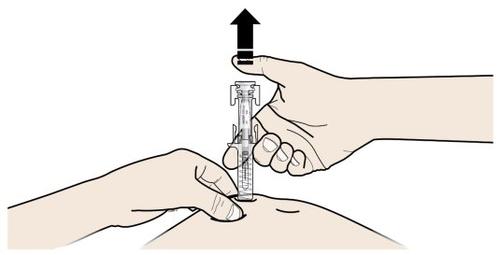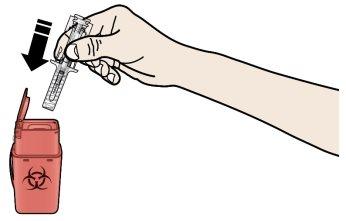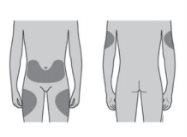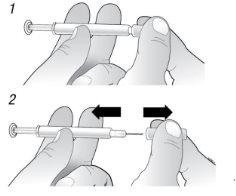
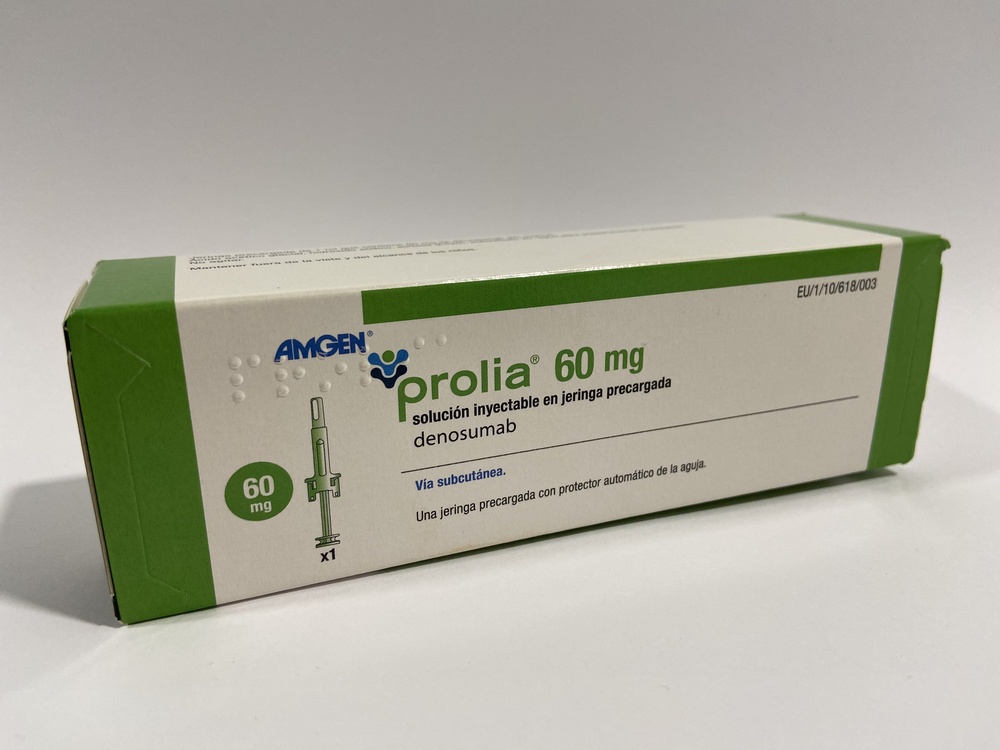
PROLIA 60 mg SOLUÇÃO INJETÁVEL EM SERINGA PREENCHIDA

Pergunte a um médico sobre a prescrição de PROLIA 60 mg SOLUÇÃO INJETÁVEL EM SERINGA PREENCHIDA

Como usar PROLIA 60 mg SOLUÇÃO INJETÁVEL EM SERINGA PREENCHIDA
Introdução
Prospecto: informação para o utilizador
Prolia 60mg solução injetável em seringa pré-carregada
denosumab
Leia todo o prospecto detenidamente antes de começar a usar este medicamento, porque contém informações importantes para si.
- Conserva este prospecto, porque pode ter que voltar a lê-lo.
- Se tiver alguma dúvida, consulte o seu médico ou farmacêutico.
- Este medicamento foi-lhe receitado somente a si, e não deve dá-lo a outras pessoas, mesmo que tenham os mesmos sintomas que si, porque pode prejudicá-las.
- Se experimentar efeitos adversos, consulte o seu médico ou farmacêutico, mesmo que se trate de efeitos adversos que não aparecem neste prospecto. Ver secção 4.
- O seu médico fornecer-lhe-á um cartão de recordatório para o doente, que contém informações importantes de segurança que deve conhecer antes e durante o tratamento com Prolia.
Conteúdo do prospecto
- O que é Prolia e para que é utilizado
- O que precisa saber antes de começar a usar Prolia
- Como usar Prolia
- Possíveis efeitos adversos
- Conservação de Prolia
- Conteúdo do envase e informações adicionais
1. O que é Prolia e como funciona e para que é utilizado
O que é Prolia e como funciona
Prolia contém denosumab, uma proteína (anticorpo monoclonal) que interfere na ação de outra proteína com o objetivo de tratar a perda óssea e a osteoporose. O tratamento com Prolia reforça os ossos e reduz as possibilidades de fratura.
O osso é um tecido vivo que se renova continuamente. Os estrógenos contribuem para a conservação da saúde dos ossos. Depois da menopausa, o nível de estrógenos desce, o que pode provocar que os ossos se tornem mais finos e frágeis. A longo prazo, isso pode provocar uma doença chamada osteoporose. A osteoporose também pode ocorrer em varões devido a várias causas, incluindo a idade e/ou um nível baixo da hormona masculina, testosterona. Também, pode ocorrer em doentes em tratamento com glucocorticoides. Muitos doentes com osteoporose não apresentam sintomas, embora continuem a ter risco de fraturar os ossos, sobretudo na coluna, anca e pulsos.
As intervenções cirúrgicas ou os medicamentos que detêm a produção de estrógeno ou testosterona, utilizados para tratar doentes com cancro da próstata ou da mama, também podem provocar a perda óssea. Com isso, os ossos tornam-se mais débeis e partem-se com mais facilidade.
Para que é utilizado Prolia
Prolia é utilizado para tratar:
- a osteoporose pós-menopáusica (pós-menopausa) em mulheres e em varões que têm um risco aumentado de fratura (rotura de ossos), reduzindo o risco de fraturas da anca, da coluna e em localizações que não são a coluna.
- a perda óssea causada pela redução do nível hormonal (testosterona) como consequência de uma operação cirúrgica ou um tratamento com medicamentos em doentes com cancro da próstata.
a perda óssea resultante do tratamento a longo prazo com glucocorticoides em doentes que têm risco elevado de fratura.
2. O que precisa saber antes de começar a usar Prolia
Não use Prolia:
- se tiver níveis baixos de cálcio no sangue (hipocalcemia).
- se for alérgico a denosumab ou a qualquer um dos outros componentes deste medicamento (incluídos na secção 6).
Advertências e precauções
Consulte o seu médico ou farmacêutico antes de começar a usar Prolia.
Durante o tratamento com Prolia, pode desenvolver uma infecção da pele com sintomas como uma zona inflamada e avermelhada na pele, mais frequentemente na parte inferior da perna, que nota quente e sensível ao toque (celulite), e que pode estar acompanhada de febre. Informe o seu médico imediatamente se apresentar algum desses sintomas.
Além disso, deve tomar suplementos de cálcio e vitamina D durante o tratamento com Prolia. O seu médico irá discutir este aspecto com si.
Enquanto estiver a receber Prolia, pode apresentar níveis baixos de cálcio no sangue. Informe o seu médico imediatamente se notar algum dos seguintes sintomas: espasmos, contrações ou cãibras musculares, e/ou entorpecimento ou formigamento nos dedos das mãos, dos pés ou ao redor da boca, e/ou convulsões, confusão ou perda de consciência.
Em raros casos, foram notificados casos de níveis muito baixos de cálcio no sangue que requereram hospitalização e, até, reações potencialmente mortais. Por isso, antes da administração de cada dose e, em doentes com predisposição para a hipocalcemia, num prazo de duas semanas após a dose inicial, serão verificados os níveis de cálcio no sangue (mediante uma análise de sangue).
Informe o seu médico se tiver ou tiver tido problemas renais graves, insuficiência renal, se precisou de se submeter a diálise ou se está a tomar medicamentos chamados glucocorticoides (como prednisolona ou dexametasona), porque podem aumentar o risco de ter níveis baixos de cálcio no sangue se não tomar suplementos de cálcio.
Problemas na boca, dentes ou maxila
Em doentes que recebem Prolia para a osteoporose, foi notificado em raros casos (pode afetar até 1 em cada 1.000 pessoas) um efeito adverso chamado osteonecrose da maxila (ONM) (dano no osso da maxila). O risco de ONM aumenta em doentes tratados durante muito tempo (pode afetar até 1 em cada 200 pessoas se forem tratadas durante 10 anos). A ONM também pode ocorrer após a interrupção do tratamento. É importante tentar prevenir o desenvolvimento da ONM, porque pode ser uma afecção dolorosa que pode ser difícil de tratar. Para reduzir o risco de desenvolver ONM, siga estas precauções:
Antes de receber o tratamento, informe o seu médico ou enfermeiro (profissional de saúde) se:
- tem algum problema na sua boca ou dentes, como má saúde dental, doença das gengivas, ou uma extração dental planeada.
- não recebe revisões dentárias periódicas ou faz tempo que não se submeteu a uma revisão dental.
- é fumador (porque pode aumentar o risco de problemas dentários).
- foi tratado previamente com um bisfosfonato (utilizado para prevenir ou tratar distúrbios ósseos).
- está a tomar medicamentos chamados corticosteroides (como prednisolona ou dexametasona).
- tem cancro.
O seu médico pode pedir-lhe que se submeta a uma revisão dental antes de iniciar o tratamento com Prolia.
Durante o tratamento com Prolia, deve manter uma boa higiene bucal e submeter-se a revisões dentárias rotineiras. Se utilizar próteses dentárias, deve assegurar-se de que esta se ajusta adequadamente. Se estiver em tratamento dental ou se vai submeter a cirurgia dental (p. ex. extrações dentárias), informe o seu médico sobre o seu tratamento dental e informe o seu dentista de que está em tratamento com Prolia.
Entre em contacto com o seu médico e o seu dentista imediatamente se experimentar algum problema na sua boca ou dentes, como dentes móveis, dor ou inflamação, ou úlceras que não curam ou que supuram, porque podem ser sintomas de ONM.
Fraturas inusuais do fémur
Algumas pessoas desenvolveram fraturas inusuais no fémur enquanto estavam em tratamento com Prolia. Consulte com o seu médico se sofre uma dor nova ou inusual na anca, virilha ou coxa.
Crianças e adolescentes
Prolia não deve ser utilizado em menores de 18 anos de idade.
Uso de Prolia com outros medicamentos
Informe o seu médico ou farmacêutico se está a tomar, tomou recentemente ou pode ter que tomar qualquer outro medicamento. É especialmente importante que informe o seu médico se está em tratamento com outro medicamento que contenha denosumab.
Não deve usar Prolia juntamente com outro medicamento que contenha denosumab.
Gravidez e amamentação
Prolia não foi testado em mulheres grávidas. É importante que informe o seu médico se está grávida, acredita que pode estar ou planeia ficar grávida. Não se recomenda utilizar Prolia durante a gravidez. As mulheres em idade fértil devem utilizar métodos anticoncecionais eficazes durante o tratamento com Prolia e pelo menos 5 meses após a interrupção do tratamento com Prolia.
Se ficar grávida durante o tratamento com Prolia ou menos de 5 meses após a interrupção do tratamento com Prolia, informe o seu médico.
Desconhece-se se Prolia é excretado no leite materno. É importante que comunique ao seu médico se está em período de amamentação ou se planeia estar. O seu médico irá ajudá-lo a decidir se deve abandonar a amamentação, ou se deve deixar de usar Prolia, tendo em conta o benefício da amamentação para o bebê e o benefício de Prolia para a mãe.
Se estiver em período de amamentação durante o tratamento com Prolia, por favor informe o seu médico.
Consulte o seu médico ou farmacêutico antes de utilizar qualquer medicamento.
Condução e uso de máquinas
A influência de Prolia sobre a capacidade para conduzir e utilizar máquinas é nula ou insignificante.
Prolia contém sorbitol
Este medicamento contém 47 mg de sorbitol por cada ml de solução.
Prolia contém sódio
Este medicamento contém menos de 1 mmol de sódio (23 mg) por 60 mg; isto é, é essencialmente “isento de sódio”.
3. Como usar Prolia
A dose recomendada é uma seringa pré-carregada de 60 mg administrada sob a pele (via subcutânea) em uma injeção única uma vez cada 6 meses. Os melhores locais para aplicar a injeção são a parte superior dos músculos da coxa e o abdômen. Se a injeção for aplicada por um cuidador (pessoa que o atende), também pode administrar a injeção na face externa da parte superior do braço. Consulte com o seu médico a data da próxima possível injeção. Cada embalagem de Prolia contém um cartão de recordatório que pode ser destacado do cartão e utilizado para manter um registo da data da próxima injeção.
Além disso, deve tomar suplementos de cálcio e vitamina D durante o tratamento com Prolia. O seu médico irá discutir este aspecto com si.
O seu médico pode decidir se é melhor que a injeção de Prolia seja administrada por si ou por um cuidador. O seu médico ou profissional de saúde irá mostrar-lhe a si ou ao seu cuidador como utilizar Prolia. Se desejar obter instruções sobre como injetar Prolia, leia o último apartado deste prospecto.
Não agite.
Se esquecer de usar Prolia
Se saltar uma dose de Prolia, a injeção deve ser administrada o mais breve possível. Posteriormente, as injeções devem ser programadas cada 6 meses a partir da data da última injeção.
Se interromper o tratamento com Prolia
Para tirar o máximo proveito do seu tratamento e reduzir o risco de fraturas, é importante que utilize Prolia durante todo o período que o médico prescrever. Não interrompa o tratamento sem falar antes com o seu médico.
4. Possíveis efeitos adversos
Como todos os medicamentos, este medicamento pode produzir efeitos adversos, embora nem todas as pessoas os sofram.
Os doentes tratados com Prolia podem desenvolver infecções da pele (principalmente celulite) com pouca frequência. Informe o seu médico imediatamentese aparecer algum desses sintomas durante o tratamento com Prolia: zona inchada e avermelhada na pele, normalmente na parte inferior da perna, quente e sensível ao toque e que pode estar acompanhada de febre.
Raramente, os doentes que recebem Prolia podem desenvolver dor na boca e/ou maxila, inflamação ou úlceras que não se curam na boca ou maxila, supuração, entorpecimento ou sensação de peso na maxila, ou mobilidade de um dente. Estes podem ser sintomas de dano ósseo na maxila (osteonecrose). Informe o seu médico e o seu dentista imediatamentese experimentar tais sintomas enquanto estiver em tratamento com Prolia ou após a interrupção do tratamento.
Raramente, os doentes que recebem Prolia podem apresentar níveis baixos de cálcio no sangue (hipocalcemia); os níveis muito baixos de cálcio no sangue podem requerer hospitalização e, até, reações potencialmente mortais. Os sintomas incluem espasmos, contrações ou cãibras nos músculos, e/ou entorpecimento ou formigamento nos dedos das mãos, nos dedos dos pés ou ao redor da boca e/ou convulsões, confusão ou perda de consciência. Se apresentar algum, informe o seu médico imediatamente. Os níveis baixos de cálcio no sangue também podem provocar uma alteração no ritmo do coração chamada prolongamento do QT, que se pode observar realizando um eletrocardiograma (ECG).
Raramente podem ocorrer fraturas inusuais do fémur em doentes que recebem Prolia. Consulte com o seu médicose sofre uma dor nova ou inusual na anca, virilha ou coxa, porque pode ser uma indicação precoce de uma possível fratura do fémur.
Raramente podem ocorrer reações alérgicas em doentes que recebem Prolia. Os sintomas incluem inchaço no rosto, lábios, língua, garganta ou outras partes do corpo; erupção, picazão ou urticária na pele, sibilância ou dificuldade em respirar. Informe o seu médicose experimentar tais sintomas enquanto estiver em tratamento com Prolia.
Efeitos adversos muito frequentes(podem afetar mais de 1 em cada 10 pessoas):
- dor de ossos, articulações e/ou músculos que por vezes é intenso,
- dor de pernas ou braços (dor nas extremidades).
Efeitos adversos frequentes(podem afetar até 1 em cada 10 pessoas):
- micção dolorosa, micção frequente, presença de sangue na urina, incontinência urinária,
- infecção do tracto respiratório superior,
- dor, formigamento ou insensibilidade que se estende para a parte inferior da perna (ciática),
- prisão de ventre,
- desconforto abdominal,
- erupção cutânea,
- afecção cutânea com picazão, vermelhidão e/ou secura (eczema),
- perda de cabelo (alopecia).
Efeitos adversos pouco frequentes(podem afetar até 1 em cada 100 pessoas):
- febre, vómitos e dor ou desconforto abdominal (diverticulite),
- infecção do ouvido,
- erupção na pele ou ulceraciones na boca (erupções liquenoides medicamentosas).
Efeitos adversos muito raros(podem afetar até 1 em cada 10.000 pessoas):
- reação alérgica que pode danificar os vasos sanguíneos, principalmente da pele (p. ex. manchas cor de púrpura ou vermelho pardacento, urticária ou úlceras da pele) (vasculite por hipersensibilidade).
Frequência não conhecida(não pode ser estimada a partir dos dados disponíveis):
- consulte o seu médico se você tem dor de ouvido, o ouvido supura e/ou sofre uma infecção de ouvido. Estes podem ser sintomas de dano nos ossos do ouvido.
Comunicação de efeitos adversos
Se experimentar qualquer tipo de efeito adverso, consulte o seu médico ou farmacêutico, mesmo que se trate de possíveis efeitos adversos que não aparecem neste prospecto. Também pode comunicá-los diretamente através do sistema nacional de notificação incluído no Apêndice V. Mediante a comunicação de efeitos adversos, você pode contribuir para fornecer mais informações sobre a segurança deste medicamento.
5. Conservação de Prolia
Mantenha este medicamento fora da vista e do alcance das crianças.
Não utilize este medicamento após a data de validade que aparece na etiqueta e na caixa após “CAD” ou “EXP”. A data de validade é o último dia do mês que se indica.
Conservar na geladeira (entre 2 ºC e 8 ºC).
Não congelar.
Mantenha a seringa pré-carregada no embalagem exterior para protegê-la da luz.
Antes da injeção, a seringa pré-carregada pode ser deixada fora da geladeira para que atinja a temperatura ambiente (até 25 ºC). Desta forma, a injeção será menos incômoda. Uma vez que a seringa tenha atingido a temperatura ambiente (até 25 ºC), deve ser utilizada antes de passarem 30 dias.
Os medicamentos não devem ser jogados nos esgotos nem na lixeira. Pergunte ao seu farmacêutico como se livrar dos embalagens e dos medicamentos que já não precisa. Desta forma, você estará a ajudar a proteger o meio ambiente.
6. Conteúdo do frasco e informação adicional
Composição de Prolia
- O princípio ativo é o denosumab. Cada seringa pré-carregada de 1 ml contém 60 mg de denosumab (60 mg/ml).
- Os outros componentes são ácido acético glacial, hidróxido de sódio, sorbitol (E420), polissorbato 20 e água para preparações injetáveis.
Aspecto de Prolia e conteúdo do frasco
Prolia é uma solução injetável transparente, incolor ou ligeiramente amarela, disponível em uma seringa pré-carregada pronta para uso.
Cada frasco contém uma seringa pré-carregada com protetor da agulha.
Cada frasco contém uma seringa pré-carregada.
Pode ser que apenas alguns tamanhos de frascos sejam comercializados.
Título da autorização de comercialização e responsável pela fabricação
Amgen Europe B.V.
Minervum 7061,
4817 ZK Breda,
Países Baixos
Título da autorização de comercialização
Amgen Europe B.V.
Minervum 7061
4817 ZK Breda
Países Baixos
Fabricante
Amgen Technology (Ireland) Unlimited Company
Pottery Road
Dun Laoghaire
Co Dublin
Irlanda
Fabricante
Amgen NV
Telecomlaan 5-7
1831 Diegem
Bélgica
Pode solicitar mais informações sobre este medicamento dirigindo-se ao representante local do titular da autorização de comercialização:
Bélgica/Bélgica/Bélgica s.a. Amgen n.v. Tel: +32 (0)2 7752711 | Lituânia Amgen Switzerland AG Vilniaus filialas Tel: +370 5 219 7474 |
| Luxemburgo/Luxemburgo s.a. Amgen Bélgica/Bélgica Tel: +32 (0)2 7752711 |
República Checa Amgen s.r.o. Tel: +420 221 773 500 | Hungria Amgen Kft. Tel: +36 1 35 44 700 |
Dinamarca Amgen filial af Amgen AB, Sverige Tlf: +45 39617500 | Malta Amgen S.r.l. Itália Tel: +39 02 6241121 |
Alemanha Amgen GmbH Tel: +49 89 1490960 | Países Baixos Amgen B.V. Tel: +31 (0)76 5732500 |
Estônia Amgen Switzerland AG Vilniaus filialas Tel: +372 586 09553 | Noruega Amgen AB Tlf: +47 23308000 |
Grécia Amgen Ελλάς Φαρμακευτική Ε.Π.Ε. Τηλ: +30 210 3447000 | Áustria Amgen GmbH Tel: +43 (0)1 50 217 |
Espanha Amgen S.A. Tel: +34 93 600 18 60 | Polônia Amgen Biotechnologia Sp. z o.o. Tel: +48 22 581 3000 |
França Amgen S.A.S. Tél: +33 (0)9 69 363 363 | Portugal Amgen Biofarmacêutica, Lda. Tel: +351 21 4220606 |
Croácia Amgen d.o.o. Tel: +385 (0)1 562 57 20 | Romênia Amgen România SRL Tel: +4021 527 3000 |
Irlanda Amgen Ireland Limited Tel: +353 1 8527400 | Eslovênia AMGEN zdravila d.o.o. Tel: +386 (0)1 585 1767 |
Islândia Vistor hf. Sími: +354 535 7000 | República Eslovaca Amgen Slovakia s.r.o. Tel: +421 2 321 114 49 |
Itália Amgen S.r.l. Tel: +39 02 6241121 | Finlândia Amgen AB, sivuliike Suomessa/Amgen AB, filial i Finland Puh/Tel: +358 (0)9 54900500 |
Chipre C.A Papaellinas Ltd Τηλ: +357 22741 741 | Suécia Amgen AB Tel: +46 (0)8 6951100 |
Letônia Amgen Switzerland AG Rigas filiale Tel: +371 257 25888 | Reino Unido (Irlanda do Norte) Amgen Limited Tel: +44 (0)1223 420305 |
Data da última revisão deste prospecto:
Outras fontes de informação
A informação detalhada deste medicamento está disponível no site da Agência Europeia de Medicamentos: http://www.ema.europa.eu/
-------------------------------------------------------------------------------------------------------------------
Instruções de uso: | |
Guia dos componentes | |
Antes de usar | Depois de usar |
|
|
Importante | |
Leia esta informação importante antes de usar a seringa pré-carregada de Prolia com protetor automático da agulha:
Se tiver dúvidas, contate o seu médico ou profissional de saúde. | |
Paso 1: Preparação | |
A | Retire o frasco da seringa pré-carregada que está dentro do cartucho e pegue os materiais que necessita para a injeção: toalhetes com álcool, algodão ou gazes, uma tirita e um contêiner para descartar objetos pontiagudos (não incluído). |
Para uma injeção menos dolorosa, deixe a seringa pré-carregada em temperatura ambiente durante aproximadamente 30 minutos antes da injeção. Lave as mãos cuidadosamente com água e sabão. Coloque a seringa pré-carregada nova e os outros materiais sobre uma superfície limpa e bem iluminada.
|
B | Abra o frasco, retirando a cobertura. Pegue a seringa pré-carregada pelo protetor de segurança para sacá-la do frasco. |
| |
Por motivos de segurança:
|
C | Examine o medicamento e a seringa pré-carregada. |
| |
Nãouse a seringa pré-carregada se:
| |
Em qualquer um desses casos, contate o seu médico ou profissional de saúde. |
Paso 2: Prepare-se | |
A | Lave as mãos cuidadosamente. Prepare e limpe o local da injeção. |
Pode injetar o medicamento em:
| |
Limpe o local da injeção com uma gaze com álcool. Deixe a pele secar.
Evite se injetar em áreas com cicatrizes ou estrias. | |
B | Tire cuidadosamente o capuchão gris da agulha em linha reta, mantendo a seringa separada do seu corpo. |
|
C | Pegue o local da injeção para criar uma superfície firme. |
| |
Paso 3: Injete | |
A | Mantenha a pele puxada. INSIRA a agulha na pele. |
| |
B | PRESIONE a cabeça do êmbolo com uma pressão leve e constante até que sinta ou ouça um “clic”. Empurre completamente para baixo até ouvir o “clic”. |
|
C | DEIXE DE PRESIONAR a cabeça do êmbolo. Em seguida, SEPARE a seringa da pele. |
Após soltar a cabeça do êmbolo, o protetor de segurança da seringa pré-carregada cobrirá de forma segura a agulha.
| |
Paso 4: Final | |
A | Descarte a seringa pré-carregada usada e outros materiais em um contêiner para descartar objetos pontiagudos. |
Os medicamentos devem ser eliminados de acordo com a regulamentação local. Pergunte ao seu farmacêutico como descartar os medicamentos que não precisa. Dessa forma, ajudará a proteger o meio ambiente. Mantenha a seringa e o contêiner de objetos pontiagudos fora do alcance e da vista das crianças.
|
B | Examine o local da injeção. |
Se observar sangue, pressione o local da injeção com um algodão ou uma gaze. Nãoesfregue o local da injeção. Se necessário, coloque uma tirita. |
Instruções para se injetar Prolia seringa pré-carregada
Esta seção contém informações sobre o modo de uso da seringa pré-carregada de Prolia. É importante que você ou seu cuidador (pessoa que o atende) não administrem a injeção até que tenham recebido instruções sobre como fazer isso do médico ou profissional de saúde.Lave as mãos sempre antes de aplicar a injeção. Se tiver dúvidas sobre como administrar a injeção, consulte o seu médico ou profissional de saúde.
Antes de começar
Leia atentamente todas as instruções antes de usar a seringa pré-carregada.
NÃOuse a seringa pré-carregada se não tiver o capuchão da agulha.
Como usar a seringa pré-carregada de Prolia?
Seu médico prescreveu uma seringa pré-carregada de Prolia para injetar no tecido que há justo abaixo da pele (subcutâneo). Deve injetar todo o conteúdo (1 ml) da seringa pré-carregada de Prolia uma vez a cada 6 meses, de acordo com as instruções do seu médico.
Material:
Para administrar uma injeção, você precisará:
- Uma seringa pré-carregada nova de Prolia;
- Algodão com álcool ou similar.
O que deve fazer antes de administrar uma injeção subcutânea de Prolia
- Retire a seringa pré-carregada da geladeira.
NÃOpegue a seringa pré-carregada pelo êmbolo ou pelo capuchão da agulha. Isso pode danificar o dispositivo.
- A seringa pré-carregada pode ser deixada fora da geladeira para que alcance a temperatura ambiente. Dessa forma, a injeção será menos dolorosa.
NÃOa aqueça de outra forma, como por exemplo em um micro-ondas ou em água quente.
NÃOdeixe a seringa exposta à luz solar direta.
- NÃOagite a seringa pré-carregada.
- NÃOretire o capuchão da agulha da seringa pré-carregada até que esteja preparado para a injeção.
- Verifique a data de validade na etiqueta da seringa pré-carregada (EXP).
NÃOa use se já passou o último dia do mês indicado.
- Verifique o aspecto de Prolia. Deve ser uma solução transparente, incolor ou ligeiramente amarela. Não deve ser injetada se contiver partículas ou se estiver turva ou descolorida.
- Encontre uma superfície limpa, confortável e bem iluminada e coloque todo o material necessário ao seu alcance.
- Lave as mãos bem.
Onde deve administrar a injeção? Os melhores lugares para se injetar são a parte superior das coxas e o abdômen. Seu cuidador também pode administrar a injeção na face externa da parte superior dos braços. |
|
Como administrar a injeção?
NÃOtoque a agulha nem pressione o êmbolo.
|
|
Lembre-se:se tiver algum problema, não hesite em pedir ajuda e conselho ao seu médico ou profissional de saúde. Como descartar as seringas usadas
|

Quanto custa o PROLIA 60 mg SOLUÇÃO INJETÁVEL EM SERINGA PREENCHIDA em Espanha em 2025?
O preço médio do PROLIA 60 mg SOLUÇÃO INJETÁVEL EM SERINGA PREENCHIDA em dezembro de 2025 é de cerca de 208.66 EUR. Os valores podem variar consoante a região, a farmácia e a necessidade de receita. Confirme sempre com uma farmácia local ou fonte online para obter informações atualizadas.
- País de registo
- Preço médio em farmácia208.66 EUR
- Substância ativa
- Requer receita médicaSim
- Fabricante
- Esta informação é apenas para referência e não constitui aconselhamento médico. Consulte sempre um médico antes de tomar qualquer medicamento. A Oladoctor não se responsabiliza por decisões médicas baseadas neste conteúdo.
- Alternativas a PROLIA 60 mg SOLUÇÃO INJETÁVEL EM SERINGA PREENCHIDAForma farmacêutica: INJETÁVEL, 120 mgSubstância ativa: denosumabFabricante: Fresenius Kabi Deutschland GmbhRequer receita médicaForma farmacêutica: INJETÁVEL, 120 mgSubstância ativa: denosumabFabricante: Fresenius Kabi Deutschland GmbhRequer receita médicaForma farmacêutica: INJETÁVEL, 60 mgSubstância ativa: denosumabFabricante: Fresenius Kabi Deutschland GmbhRequer receita médica
Alternativas a PROLIA 60 mg SOLUÇÃO INJETÁVEL EM SERINGA PREENCHIDA noutros países
As melhores alternativas com o mesmo princípio ativo e efeito terapêutico.
Alternativa a PROLIA 60 mg SOLUÇÃO INJETÁVEL EM SERINGA PREENCHIDA em Ukraine
Alternativa a PROLIA 60 mg SOLUÇÃO INJETÁVEL EM SERINGA PREENCHIDA em Poland
Médicos online para PROLIA 60 mg SOLUÇÃO INJETÁVEL EM SERINGA PREENCHIDA
Avaliação de posologia, efeitos secundários, interações, contraindicações e renovação da receita de PROLIA 60 mg SOLUÇÃO INJETÁVEL EM SERINGA PREENCHIDA – sujeita a avaliação médica e regras locais.





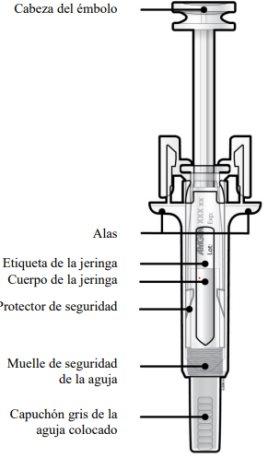

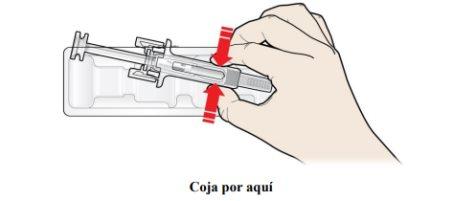
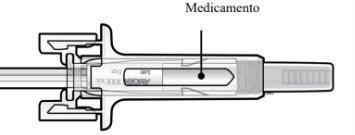
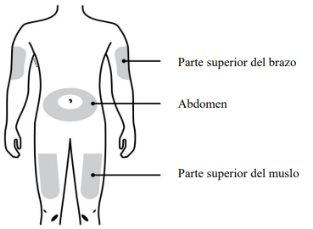
 Nãose injete em áreas onde a pele esteja sensível, contundida, vermelha ou com endurecimentos.
Nãose injete em áreas onde a pele esteja sensível, contundida, vermelha ou com endurecimentos.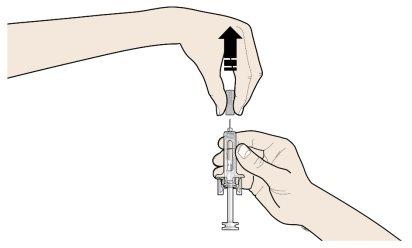
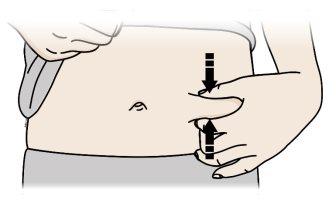
 É importante manter a pele puxada quando se injetar.
É importante manter a pele puxada quando se injetar.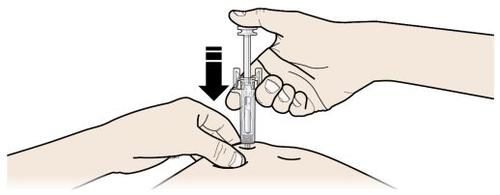
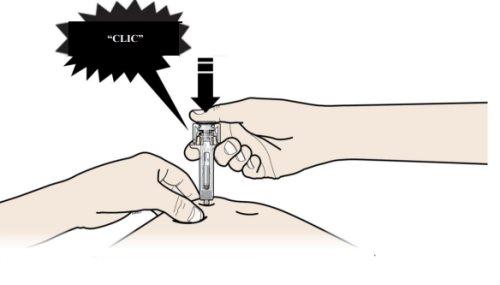
 É importante pressionar para baixo até ouvir o “clic” para receber toda a dose.
É importante pressionar para baixo até ouvir o “clic” para receber toda a dose.